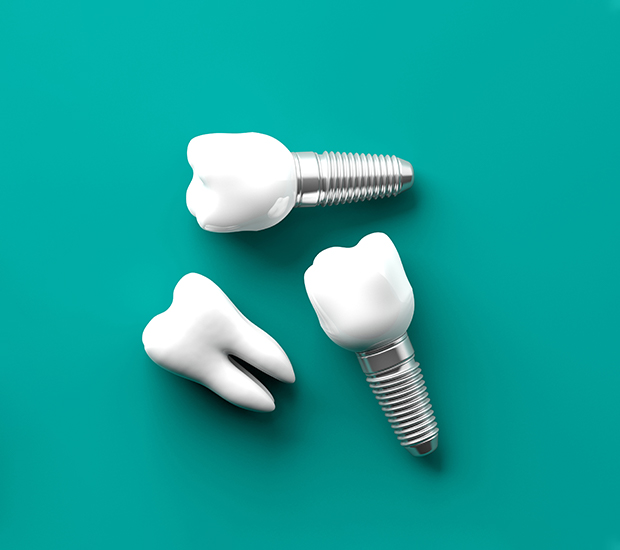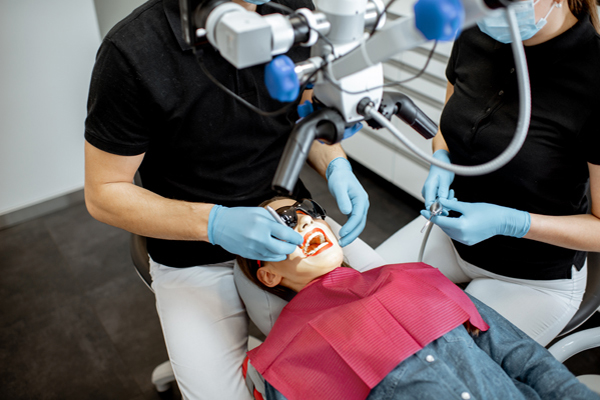Dental ImplantsSaratoga Springs, NY
Dental implants have grown to be a popular treatment option for replacing missing teeth. Having missing teeth can result in cosmetic and restorative problems, both of which can get in the way of smiling, eating and even speaking. Thankfully, with modern-day technology, dentists can place dental implants, thus improving smiles and ensuring a natural bite force to aid in eating and speaking.
A guide to dental implants
Below is a guide to dental implants, including what to expect from the placement process and everything that it entails. Keep reading to learn more!
The dental implant process
Dental implant placement requires a minimally invasive surgery, but the procedure is relatively straightforward. After it is performed, individuals will have to wait a few months in order to give the bone time to fuse with the dental implants via a process called osseointegration.
The procedure
Dental implant placement involves two to three procedures depending on the individual's needs, goals and desires. The first procedure will always be the same, as it involves the actual implant placement. The dental implants are placed beneath the gums, directly into the bone with the help of a dental drill, anesthesia and pain medications. How long the procedure takes depends on how many dental implants need to be placed.
The second dental implant procedure involves the placement of the abutments, which are small metal connectors that attach the implant head to the artificial teeth. The artificial teeth may be a partial denture, crowns or a bridge, depending on how many teeth are being replaced. Abutment placement is quick and does not extend past an hour.
Lastly, individuals will return to the dentist for attachment of the final, permanent artificial teeth, which will have been custom-made by a dental lab. If dentures or bridges are attached, then they will snap right on, with no procedure required. However, if dental crowns are being placed, individuals should expect a non-invasive procedure in which crown cementation takes place.
Candidates for Dental Implants
Individuals who have one or multiple missing teeth make great candidates for dental implants. Additionally, those who have severely decayed teeth can also undergo dental implant placement, but extraction may have to take place first.
As far as specific criteria, dentists do require individuals to have ample bone within their jaw in order to receive dental implants. Because the implants have to fuse with the bone, it is essential that there is enough to support the placement. In the event that there is not enough bone structure present, a grafting procedure may have to be performed first.
Expectations
Individuals who are getting dental implants placed should expect to commit a few months of time to the entire process. While the osseointegration process varies for each person, generally speaking, it can take up to six months or more, depending on how many dental implants are placed.
Cosmetic and restorative goals
There are various goals that a cosmetic dentist can help their patients meet.
Cosmetic
Dental implants can be used to improve the overall aesthetics of one's smile. Individuals who have missing teeth may find it difficult to show off their smile, which can result in a lack of confidence. Thankfully, dental implants can be paired with porcelain dental crowns, which can help ensure a natural-looking smile.
Restorative
While dental implants do replace missing teeth, thus helping to improve one's appearance, there is also a restorative side to the process. When teeth are missing, the jawbone becomes prone to deterioration, which can result in bone atrophy, a shrunken jaw and a change in one's facial structure. With dental implants, the bone fuses, which results in stimulation and encouragement for the jaw to remain intact. Not only are the missing teeth replaced and restored, but the entire jaw also remains healthy and strong.
Aftercare tips
After dental implants have been placed, life is going to be slightly different than before. Most individuals undergoing dental implant placement do so because they need to have missing teeth replaced. In other instances, natural teeth may be severely decayed, resulting in a need for extraction, then replacement. That said, after dental implants have been placed, the oral cavity will feel different, whether it is because teeth were missing before or in bad shape. Because of this difference, individuals should prepare to adjust accordingly. Outlined below are a few ways to care for the oral cavity when adjusting to changes.
Rest and relax
First and foremost, dentists advise individuals to rest and relax immediately after dental implants have been placed. The oral cavity will be sore and tender, which can result in discomfort. Dental implants require minimally invasive surgery, which can take a toll on the human body. Because of this, it is important to take a few days off from normal life, in order to give the body and oral cavity a chance to recover.
Physical activity should be avoided at all costs for at least three days. Most individuals are also prescribed a pain medication.
Practice good oral hygiene
It is essential to practice good oral hygiene after dental implants have been placed. Immediately after, dentists recommend rinsing with salt water a few times a day. Brushing should still be done on any remaining teeth, but for a few days, it is best to avoid the wounds where the implants were placed.
Avoid certain foods
Another recommendation after dental implant placement is to avoid certain foods that could induce damage or further discomfort. Because the oral cavity is so sensitive after dental implants are placed, it is essential to be gentle when eating. Foods that are tough, hard or chewy should be avoided for a couple of weeks while the open wound heals.
Choosing the right dental professional
When looking into dental implants, most individuals start by visiting their primary dental professional, who may be a family, general or cosmetic dentist. All three dentists are qualified to evaluate individuals who desire dental implants, whether it be for cosmetic or restorative purposes. In some scenarios, the primary dentist may also be able to perform the actual placement procedure, but they may refer out. Individuals who require multiple dental implants may need to visit an oral surgeon, as the process can be complex.
Ultimately, it is recommended to consider multiple options when it comes to deciding on which type of dental professional is best. Individuals can get one, two or even three opinions from different dentists in order to determine whose process is the least invasive but most effective. The goal is to successfully replace missing or decayed teeth with dental implants, while ensuring that there is as little pain and healing time as possible.
Individuals should consult with both cosmetic and general dentists, depending on the goal in mind. Those who have restorative issues, such as decayed or missing teeth, may want to work with a general dentist, as their expertise is based on helping patients maintain good oral health. Individuals who want to improve their appearance can benefit from consulting with a cosmetic dentist. Cosmetic dentists not only focus on aesthetics, but they also ensure the proper form and function of the entire oral cavity.
Contact Us
My Saratoga Dentist PLLC is located at
569 N. Broadway
Saratoga Springs,
NY
12866





